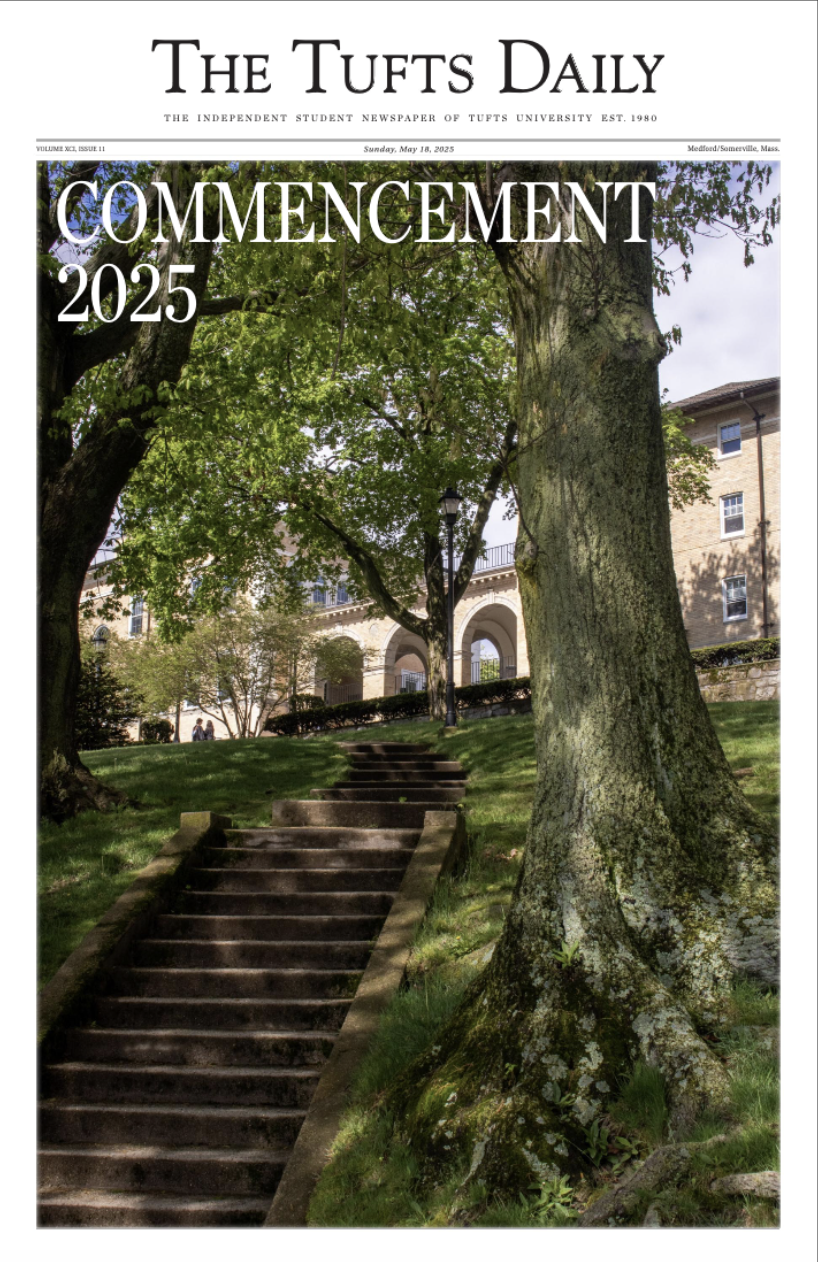Tufts Engineers Without Borders is continuing to develop its mobile greenhouse, which opened in May 2024. Members of the club hope to give hands-on engineering experience to children from local elementary schools, Medford and Somerville residents and Tufts engineers. The club is a chapter of the worldwide organization Engineers Without Borders, which works with professional and aspiring engineers to construct projects within communities in need.
Despite already having two ongoing international projects in Malawi and Nicaragua, members of Tufts EWB aspired to create a project on Tufts’ campus that would allow them to give back to the local community.
“The whole Tufts community and the local community is impacted by our project because it educates people on how global engineering is actually implemented. People often don't even know what engineering is, so to be teaching about it and teaching about how to do it in an ethical sense is also really important,” junior and co-Project Lead Adda Hennessey said.
The greenhouse, located near the Tufts student garden, involved many moving parts. There are eight engineering projects inside of the greenhouse, including a compost bin built by the club’s members, a solar panel and lighting and water distribution systems.
“The whole structure was engineered by a group. The whole interior was engineered by a group. There are tables and education interactives. There are a lot of different engineering projects inside of the greenhouse that need to be upkept, but at the same time, they're supposed to help the greenhouse be autonomous,” Hennessey explained.
Among the challenges that Tufts EWB faced while building the greenhouse was creating a functioning water distribution system.
“Over the summer, the water distribution system was not working, and I would say that [is] one of the most important parts of an autonomous greenhouse. So, we did have to do a lot of manual watering and checking up on the plants themselves,” Hennessey explained.
Agricultural co-Lead junior Francesca Wan elaborated on the struggle to create and maintain an automated watering system.
“We were able to have proper water catchment and have it trickle down to a big tank of water. But [for] the group that was trying to distribute and automate watering the plants, the code wasn’t working,” she explained.

Tufts EWB is also working on an educational programming aspect of the greenhouse. Sophomore Eli Lipman and junior Zahir Bashir, the co-leads of the education group on the greenhouse project, have been collaborating with the Eliot-Pearson Children’s School and Wild Rose Montessori School in Cambridge to create engaging ways for their students to interact with and learn more about the greenhouse. Currently, they are working on scheduling events with both schools and planning learning activities.
“It’ll just be an educational thing, where we teach them different engineering disciplines that went into making the greenhouse, teaching a little bit about the greenhouse and what it serves in terms of sustainability, and then also just have other creative activities for them, to get them more engaged with actual engineering stuff,” Bashir said.
Sophomore and co-Project Lead Matias Corona elaborated on the educational component of the greenhouse.
“Kids can interact with the greenhouse, and it’s a more effective way of learning about that sustainability, those civic goals that power the greenhouse really, and also all the engineering elements of the greenhouse,” Corona said. “We’ve talked to these schools and they’re very excited about [the] idea of showing these younger kids what engineering means at such a young age.”
Despite the challenges they have faced, the members of Tufts EWB hope to continue improving and optimizing the greenhouse for the local community. Going forward, they plan to implement a hydroponics system inside of the greenhouse in order to “increase the efficiency of the greenhouse for a higher output of fresh vegetables,” according to Hennessey. Members also want to allow local community members to plant their own plants in the greenhouse and watch them grow over time.
Sophomore and EWB Agriculture Tech Lead Duncan DeFonce reflected on the team effort that has gone into making the greenhouse a success.
“It’s easy to have a group of one or two … [engineers and] make a design and implement it, but it’s more difficult with a bigger group of 10 or so people like we have,” DeFonce said. “So making sure everybody has a hand in it and everybody’s engaged is more difficult than you’d think. But it’s also super rewarding.”






